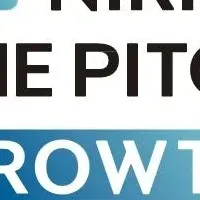
Data Integration Market Set to Surge to $33.24 Billion by 2030 with Key Drivers Identified
Data Integration Market Growth and Trends
The Data Integration Market is forecasted to experience significant growth, expanding from USD 17.58 billion in 2025 to a remarkable USD 33.24 billion by 2030, demonstrating a compound annual growth rate (CAGR) of 13.6%. This growth is primarily driven by the convergence of multi-cloud strategies, demand for AI-ready data infrastructure, and the overall acceleration of digital transformation initiatives across various industries.
The Importance of Data Integration
As organizations strive to convert vast amounts of data into actionable insights, data integration becomes a crucial strategic asset. It plays a vital role in ensuring operational efficiency, enabling real-time insights, and fostering cross-platform interoperability. In today's data-driven landscape, successful companies are increasingly implementing modern integration platforms over traditional, batch-based ETL (Extract, Transform, Load) systems. This shift allows for low-code automation, event-driven pipelines, and facilitates the flow of real-time data, reinforcing the integration as a core IT function rather than a backend operation.
Trends Driving Market Expansion
A significant trend influencing the data integration market is the escalating requirement to manage unstructured data, which is projected to take the lead in market share by 2025. With roughly 80% of enterprise data now existing in formats like emails, PDFs, and social media posts, there is a compelling need for organizations to process and analyze these complex data types effectively. Technologies such as Natural Language Processing (NLP), document classification, and intelligent OCR are being employed by modern data integration platforms. Such innovations facilitate sophisticated data operations, turning the once challenging task of unstructured data management into a flexible and efficient process.
Sector Growth: Healthcare and Beyond
Within the various sectors, healthcare and life sciences are on track to be the fastest-growing segments in the data integration market. As digital health records become increasingly common and the demand for real-time patient monitoring escalates, healthcare providers are compelled to unify various data sources, including EHRs, medical imaging, and IoT devices. Real-time data integration empowers better diagnostics and personalized care strategies, solidifying data integration as a non-negotiable solution for modern health organizations.
Geographical Insights
Geographically, Asia Pacific is anticipated to witness the fastest growth, largely fueled by government-driven digitization programs and rapid cloud adoption across nations like India, China, and Australia. The region's commitment to integrating systems across healthcare, manufacturing, and other essential sectors underlines its strategic importance in the data integration landscape. Notably, India’s Digital Public Infrastructure initiatives are generating substantial structured and unstructured data, demanding robust integration solutions.
Key Market Players
Key players in the data integration scene feature tech giants such as IBM, SAP, Oracle, Microsoft, and Google, alongside other notable firms like SAS, AWS, and Salesforce. These companies are poised to capitalize on the growing market by enhancing their service offerings to better meet the evolving demands of clients across various sectors.
Conclusion
As data continues to proliferate and its significance in operational strategy grows, the data integration market stands on the brink of transformation. With the advent of innovative technologies and the adoption of new regulatory frameworks, enterprises are expected to increasingly rely on sophisticated data integration solutions to maintain their competitive edge. The future looks bright for the data integration market as it adapts to the needs of businesses and regulatory landscapes, paving the way for truly data-driven enterprises. By embracing these changes, companies can unlock new revenue streams and enhance their operational functionalities, making data integration an indispensable part of their strategic planning and execution.
For more information on this burgeoning sector and to explore potential opportunities, visit MarketsandMarkets.
Topics Business Technology)










【About Using Articles】
You can freely use the title and article content by linking to the page where the article is posted.
※ Images cannot be used.
【About Links】
Links are free to use.